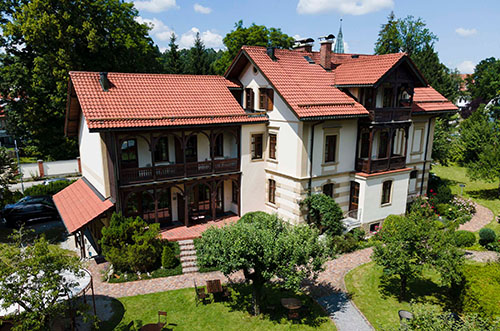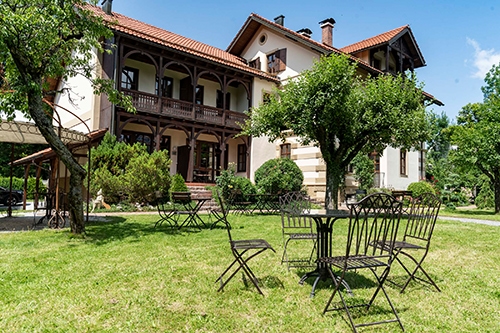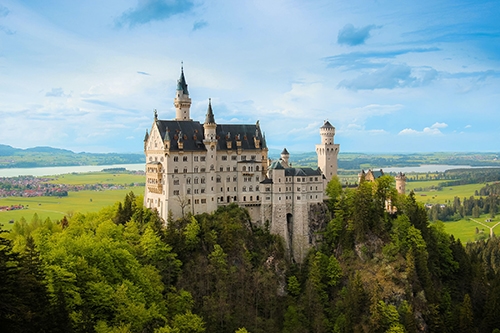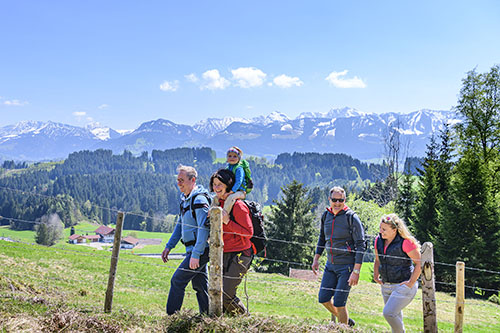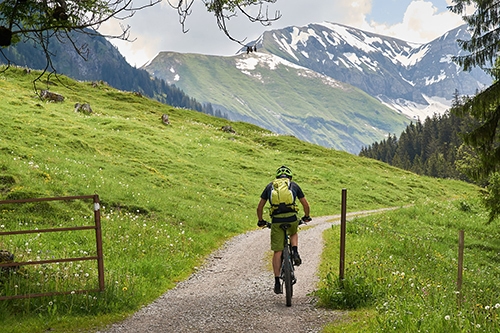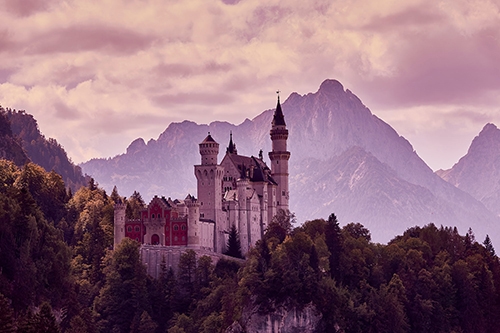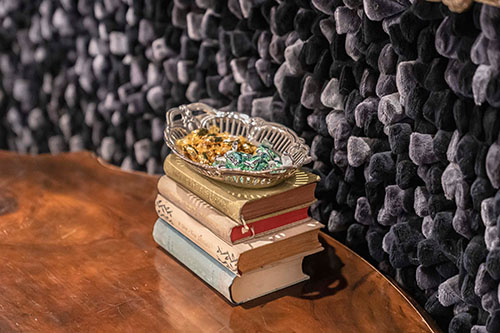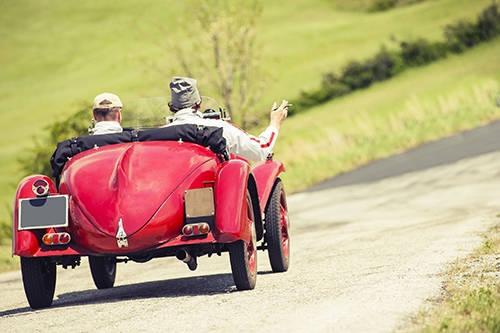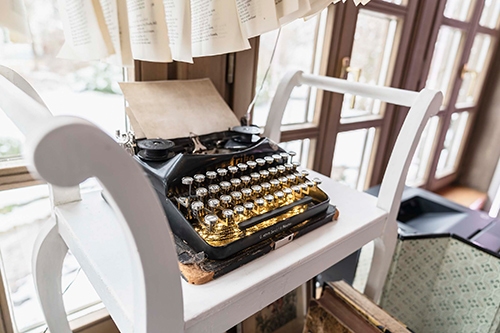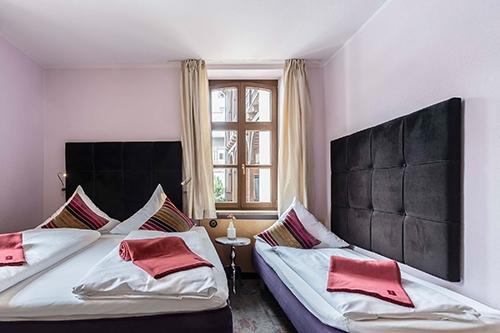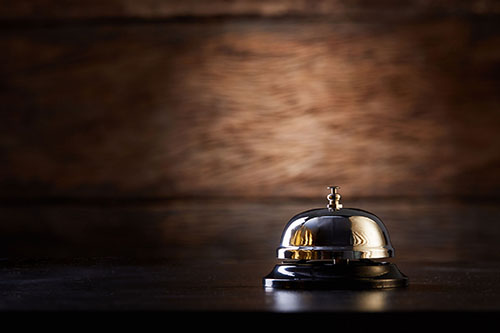Uniquely beautiful locations in Füssen and surroundings
tourist attractions
Historical locations and lots of undisturbed nature
A diverse region
“The Allgäu, endless beauty!” – Our guests can enjoy the magnificent view from the hotel in the direction of Neuschwanstein and the Tannheim Valley. With the Allgäu Alps as the background, you discover rustic villages such as Füssen, Murnau or Starnberg. Wander through the streets, marvel at the archetypical half-timbered houses and façade murals of the Alpine foothills, or visit the local history museum and find out more about the history and culture of the region.
Castles
Today, Neuschwanstein is one of the most visited castles in Europe, and is just 4 km away from Hotel Fantasia. Around 1.3 million people visit “The Castle of the Fairytale King” every year.
Visit the world famous castle and immerse yourself into the romantic history of King Ludwig II of Bavaria. Ludwig II developed the first building projects for Linderhof in 1868. Linderhof Castle is the only major castle construction which King Ludwig II lived to see completed. It is the smallest of his three castles, and the only one to be actually completed. Linderhof is regarded as the King’s favourite castle, and he stayed there most frequently by far. In the beautiful castle grounds next to the castle there is also the Venus grotto and the Moorish Kiosk, the Moroccan house and the so called King’s Cottage.
In 1832, Crown Prince Maximilian, who was later to become King Max II, acquired the ruins and had them renovated in the English Tudor style by scene painter Dominik Quaglio, as can still be visited at Hohenschwangau Castle. The romantic castle was used as a summer residence by the royal family, and was the happy nursery of Ludwig II. Its interior furnishings from the Biedermeier era remain unchanged. Particularly the interior of the castle is a real insider tip in addition to “Neuschwanstein”.
The Gothic Hohe Schloss of the Bishops of Augsburg is located on a hill above the old town of Füssen. With a picturesque courtyard and unique illusory paintings on the façades, it is one of the most well maintained medieval castles in Bavaria. The Hohe Schloss houses the branch gallery of the Bavarian State Collection of Paintings and the Municipal Art Gallery.
Mountains
For hikers who like to go “higher”, the mountains in the area have lots of attractive mountain hiking and climbing options. Our top 4 mountains from easy to challenging:
1. Buchenberg(1140m above sea level)
Easy tour of the Buchenbergalm that is also suitable for children. You can also ride up or down on the chairlift. Fantastic view of the Füssen area. Time on foot to summit: 1 hour. Route: the starting point is the bottom station of the chair lift at Buching (10km). Please follow the marked hiking trail.
2. Große Schlicke (2059m above sea level)
Easy, worthwhile hike through Tyrol with a restaurant facilities at the Otto-Mayr hut. Impressive views of steep cliffs and a beautiful panorama at the summit. Time on foot to summit: 2 1/2 hours. Route: the starting point is the car park at Bärenfalle guest house near Musau (10km). From there, you ascend on a forest trail to the Otto-Mayr hut. You then follow a hiking trail for the last half an hour to the summit cross. You return using the same route.
3. Tegelberg(1881m above sea level)
Medium difficulty, mountain tour rich in variety with variants. From Tegelberghaus to Branderschofen (summit), exposed and medium-difficulty. Great views of the castles and the alpine panorama. The trip can be shortened by taking the cable car. Time on foot to summit: 3 hours. Route: the starting point is the car park near the castles. You then make the climb up to Neuschwanstein Castle via the Pöllat gorge. Cross the Marienbrücke and follow the signs to the summit. Experienced mountain climbers can also climb from Tegelberg cable car bottom station via the “Gelbe Wand” (Yellow Wall) climbing trail. If you climb the route to the Tegelberg cable car, buses run at regular intervals to take you back to the car park.
Medium difficulty tour with the option of a detour to the border triangle (for anyone who wants to test their fitness; mountain bikes only). You then return to Füssen with a magnificent descent via the Alatsee. Distance: approx. 20km. Cycling time: 2 hours, with border triangle 2.5 hours. Tour: cycle to the castles. You follow the old Fürstenstraße to the left past Hohenschwangau Castle. On the way, you can take a right turn to the ‘Border Triangle’ viewing point. Ride to Gasthaus Schluxen on the way back, and from there via Pinswang to Vils. At the exit of Vils, turn right in the director of Alatsee. Then there’s a steep and short uphill climb. From the Alatsee guest house, you can cycle down the traffic-free trail back to Füssen.
Lakes
The 12 km long and up to 3 km wide Lake Forggen surpasses all other lakes in the Allgäu Königswinkel and is the fourth largest lake in Bavaria at 16 km². In the summer and the autumn months, it enriches our landscape, giving the town another wonderful attraction together with Lake Forggen Boat Trips.
The Alatsee is an idyllic mountain lake approximately 6 km to the west of Füssen. At first glance, the Alatsee appears to be a completely “normal” mountain lake. But it is surrounded by many legends and mysteries. Green Sulphur Bacteria, which is only known to occur in a small number of lakes worldwide. There are many different types of fish, crabs, shellfish and insects.
Relaxation and regeneration at Obersee and Mittersee. The natural wonders which are linked together like a pearl necklace, such as the Lech falls, the idyllic small lakes, the numerous varieties of flowering meadows, the impressive hillside forests and the fascinating rock formations, form a unique natural paradise. The mainly traffic-free conservation area starts at the edge of Füssen.
The Alpsee is embedded in the wooded mountain landscape of eastern Allgäu. It is one of Bavaria’s the cleanest, but also coldest lakes. It is in the “Alpsee, Schwansee and Faulenbach Valley” conservation area, directly below the two Hohenschwangauand Neuschwanstein Castles.
The southern bank of the lake invites you to go for a swim. The lake is fed by underground sources and provides excellent cooling on hot summer days.
Churches
The Wieskirche is an incredibly magnificently equipped pilgrimage church in Wies (Steingaden municipality) in the so-called Pfaffenwinkel (lit. Priest’s Corner), constructed by brothers Johann Baptist and Dominikus Zimmermann between 1745 and 1754. This church has been listed as a World Heritage Site by UNESCO since 1983. The former Benedictine monastery church and current catholic parish church, St. Mang, has been the site of worship for Saint Magnus for more than 1100 years. The monastery stands on the foundations of two Roman churches from the 9th and 12th centuries with frescos of Saints Magnus and Gallus. In overall appearance, St. Coloman has the authentic look of a pilgrimage church from the first decades of the Bavarian baroque period.
As well as its location at the foot of the Schwangau mountains, its stylishly preserved furnishings and fittings from Wessobrunner and local artists make this church particularly attractive. The first Franciscans came from Reutte in Tyrol and built the abbey in 1628 in accordance with the wishes of the citizens of Füssen. Today, the convent is a preferred home for the older confrères because of its structural characteristics. The main focus of the pastoral work is on spa pastoral care, pastoral care of tourists, pastoral care of the sick and work in the parish community.
Town of Füssen
The beautiful town of Füssen is located in the Allgäu in the south west of Bavaria. The “Romantic Road“, one of Germany’s most well-known and popular holiday routes, runs through it. Because of the many sights in the town itself and the immediate surroundings, such as the Neuschwansteinand Hohenschwangau castles, and the magnificent landscape, Füssen and the region known as the Königswinkel are very popular by holidaymakers.
Füssen’s history goes back to Roman times; the city developed on the old Roman road, Via Claudia Augusta. The important Benedictine monastery of St.Mang was built in the town in the 8th century. It was rebuilt in the baroque style between 1697 and 1726, impressing with its richly stuccoed and frescoed furnishings, and was a spiritual and worldly centre of the region. Nowadays it is a tourist attraction. In the 13th century, Füssenwas the biggest town in the Allgäu. Between 1486 and 1505, the Hohe Schloss was constructed, which still reigns majestically over the old town. Füssen was also particularly important in the Middle Ages due to the craftwork of the lute and violin makers, which had its origins in the town.
Füssen is now a Kneipp and spa town, and provides a wide variety of activities for people looking for active holidays or relaxation. However, people who are looking for culture don’t lose out either. There are numerous museums and exhibitions in the town, such as the town museum in the St.Mang monastery or the Bavarian State Painting Collections in the Hohe Schloss. The Füssen music theatre, with a view of Neuschwanstein, hosts interesting festivals and events all year round. Numerous historical churches are found in Füssen and the romantic old town offers medieval buildings and romantic narrow streets. Anyone who likes to be active will find many different options in and around Füssen; there are countless hiking and cycling trails, and the many lakes in the area provide watersports opportunities or simply provide you with somewhere to spend your time relaxing.



